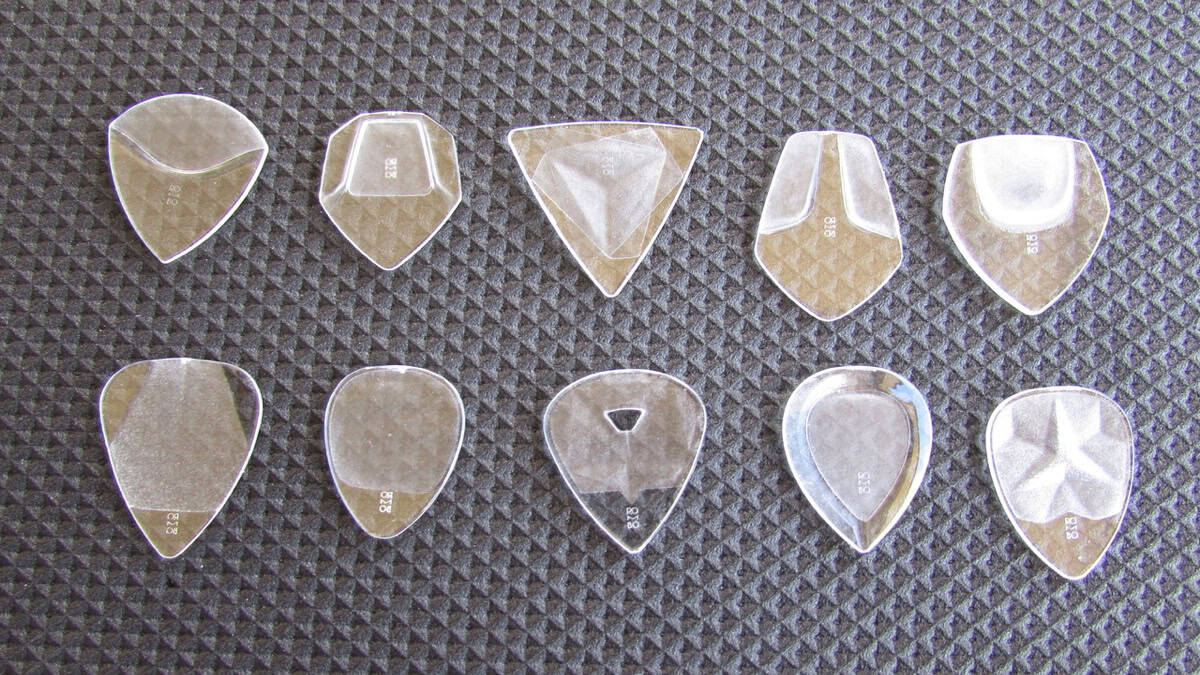Latest
Jimmy Garrison’s Bass Line from Crescent

 This month’s transcription is Jimmy Garrison’s Bass line from “Crescent”, off John Coltrane’s album Crescent.
This month’s transcription is Jimmy Garrison’s Bass line from “Crescent”, off John Coltrane’s album Crescent.
I started the transcription at 1:35 where the bass starts walking. Let’s get straight into using this transcription to make you a better player. First, as always, the notes in each line need to be compared with the major scale of the chord for each measure. If you are really familiar with this analytical process, go ahead and skip to the next paragraph, if not then read on. The major scale is always our ruler. We can take our measurements and apply them to literally any situation. Let’s take the lick in measure 19 to explain this process. The chord is some type of Eb chord, in this case, Eb minor seven. Take the Eb MAJOR scale and apply a number for each note, starting with one, and increasing by one until you have labeled the last note (high Eb) as eight. One, two, three, four, five, six, seven, and eight, a number for every scale note. Now take the notes in the measure you are analyzing: Eb, F, Gb, and Bb, and compare them to the major scale by the numbers. This example gives you 1, 2, b3, and 5 (because the Eb major scale starts with Eb, F, G, Ab, Bb). This is your lick. Now in order to apply this super common walking lick to all types of chords, you need to know your chord tones. A minor seven type of chord has the chord tones 1, b3, 5, and b7 when compared to its major scale (our ruler). The lick that we are looking at is 1, 2, b3, 5, but its simplest form is 1, 2, 3, 5. Take this generic pattern and apply it to any chord. You need to know the chord tones for each chord in order to do this. For instance, over a major seven type of chord, this lick will be unchanged. 1, 2, 3, 5 on a G maj 7 chord gives us G, A, B, D. Using the lick on a half diminished chord, aka minor 7 flat five, will give you 1, 2, b3, b5. We’ll not get into chord scales here. So if you know that a half diminished chord has the chord tones 1, b3, b5, b7, then you adjust your lick (1, 2, 3, 5) to fit, which gave us 1, 2, b3, b5. If you were using the lick on an “A half diminished” chord, aka A-7 b5, you would play A, B, C, Eb.
Now that we have a handle on how to use the major scale as our ruler, we need to apply it. First I’ll talk about how to get this transcription into your playing through specific practice techniques. Next I’ll talk about four specific ideas from this piece which include: chromaticism, anticipations, major six on a minor chord, and implying different chords. Last we’ll talk about specific licks from the piece.
This is how I recommend practicing this transcription to get the most out of it. First you have to memorize the form. This piece is a 12 measure chord progression that keeps repeating. The first eight bars of the transcription act as an intro, so look at the chord progression starting from 17 and ending with 28. Take these twelve bars and memorize the chord progression. Here’s what you should be memorizing:
Bb7sus, , Eb-7, , E half diminished, A7b9, D-7, , G7sus, , C-7, ,
Each coma represents a full measure, therefore, a chord that has two commas after it will last for two full measures. If you are still pretty new to memorizing changes, this will be a little difficult, but be encouraged by the fact that it will keep getting easier every time you do it. Memorizing changes is a skill that will improve only through practice. So if this proves difficult for you, take heart in the fact that it will never be this hard again.
Now take measures 17-28 and memorize the bass line. After you have it memorized, analyze these twelve bars against the chord symbols. At this point you should have the bass line memorized, and the chord progression. So now you need to compare each measure, against the major scale for that chord. The first two measures (17, and 18) will give you this:
1 1 b7 6, 56 2 1 61,
Again, I am using comas to represent measures, I will always ignore ghost notes (note heads that are show as an X) because they are not notes, they are percussion. I tried to group notes by each beat. Measure 18 starts with two eighth notes so I put those two numbers right next to each other to try and make it easier to read. You need to analyze this way for the entire 12 measures. Now memorize the number analysis, and combine it in your mind with the bass line that you already have memorized. To put it another way, you will no longer play the line as if you were whistling a melody, you will be thinking of the numerical analysis for every note as compared to every chord, and you will be doing this for every note you play. If you are new at thinking this way, it may seem very difficult at first, but if you want to get good, you can’t avoid this. If it’s really hard, just take one or two measures a day. Now when you play the line, do it slowly, always being conscious of the chords that are occurring, and of the number analysis of what you are playing. Play these 12 measures for about a week until you are comfortable with thinking about these three concepts (chords, numbers, and playing the line). Then take the next 12 measures for the following week and apply the same approach. When you do this, you will internalize these licks and ideas into your own playing. You will greatly increase your facility for memorizing changes, and understanding the notes against the chords. In short you’ll be well on your way to becoming a monster on your bass. These two skills are essential for improvising in either a walking line or a solo.
Now let’s talk about ideas from this transcription. Take note of how often a chromatic note is used on beat four of a measure to lead into the chord tone of the next measure. I counted eight instances of this at measures: 12, 32, 34, 43, 44, 50, 80, and 92. Use this technique on every measure of an easy song to get it in your playing. Next look at how many times Jimmy plays a natural sixth (the note when compared to the major scale) over a minor chord. I counted at least four instances at measures: 2, 12, 23, and 36. The major sixth note will almost always work on a minor chord in jazz, especially if you’re not sure what kind of sixth to use. Now look at how many times Jimmy uses a “push” or anticipation. The most common that I found were pushes on “and of 1” and “and of four”. Examples of this are in measures: 11, 12, 45, 73, 81, 89, 93 and 96. The last idea we’ll talk about is implying a different chord change. Jimmy constantly implies two measures of A7b9 instead of playing one measure on E half diminished, then one measure on A7b9. These chords occurs on measures five and six of the twelve measure progression that you should have memorized. Check out measures: 21, 33, 45, 69, 81 and 93. You can do this on any 2-5 progression, but I don’t recommend doing it every time except in special situations.
Now let’s talk about some licks. First, we’ll look at some licks that Jimmy seems to use often. One lick is: 1 2 3 1. This happens at measures 24, 96, and 99. The next lick is: 1 2 3 5, and occurs at measures: 19 and 84. Another common lick is: 8 7 6 5, and this one happens at: 23, 49, and 83. Take one of these licks and use it on every chord in a simple jazz tune like Autumn Leaves, or All the Things You Are. Remember to adjust each lick pattern to fit the chord tones. You don’t just play 1 2 3 1 on any chord, you have to adjust to the chord tones. On a minor seven chord you would play 1 2 b3 1. All these licks are basic ideas to use as building blocks for walking lines and can be used often in a single song. Now let’s look at some really “flavorful” licks, which should be used more sparingly. Take each lick and analyze against the major scale of the chord in order to use the idea on any chord in your own playing. In measure six, Jimmy plays all fourths, which matches perfectly with what McCoy Tyner is playing on keys. Most likely, Jimmy and McCoy had played this song enough that they both knew they would play this here, and it’s a great touch. Fourths are a distinct sound and produce a really nice effect to add variation in your walking. Next look at measure 12, especially beats three and four. This is a great lick to use on a minor chord to take you back to the root. The “push” on the “and of four” should be included as part of the lick. The next nice lick is measure 34. Beat four of this measure should be analyzed as simply a chromatic note leading into the root of the next measure. Lastly, check out the nice two measure lick at 37. This would be great on any 7th (dominant) chord. You have to take your analysis of each lick, and apply them over a variety of different changes from a real tune before you will see them occur naturally in your own walking. Remember to always adjust the numbers of the lick for the chord tones of the measure that you are playing
That’s it for this month. Just wait for next month when we finish this song out. There’s lots of stuff to work on here, but if you have any questions about anything you can always shoot me a message through the website, or better yet, take it to your instructor. Concepts like these are always better explained and demonstrated in person. The suggestions here will give you real results, but it’s also real work. There’s no magic wand, if you want to sound better, it takes work. But it’s a lot of fun, don’t give up. Remember that it always gets easier the more work you put into it. Until next time.
Bass Videos
Artist Update With Bassist Derek Frank

Bassist Derek Frank…
Many of you will remember the last time I chatted with Derek Frank was back in 2017. The main thing that impressed me was how busy Derek was and how he juggled playing with many huge acts.
Now, I am happy to hear that Derek launched a new album last March titled “Origin Story” where he digs deep into his roots and pays homage to Pittsburg.
Join me as we get caught up after all these years and hear the details about the new album, how Derek gets his sound, and his plans for the future.
Photo, Stephen Bradley
Featured Videos:
Visit Online:
www.derekfrank.com
www.instagram.com/derekfrankbass
www.youtube.com/derekfrankbass
www.facebook.com/derekfrankbass
Latest
This Week’s Top 10 Basses on Instagram

Check out our top 10 favorite basses on Instagram this week…
Click to follow Bass Musician on Instagram @bassmusicianmag
FEATURED @foderaguitars @bqwbassguitar @lecomptebass @xvector_basses @vuorensaku_guitars @phdbassguitars @meridian_guitars @sterlingbymusicman @ramabass.ok @overwaterbasses
Gear News
New Gear: Alberto Rigoni Signature Bass, the VPR5 by Gaetano Costanzo!

Alberto Rigoni Signature Bass, the VPR5 by Gaetano Costanzo!
Internationally renowned bassist ALBERTO RIGONI (soloist, BAD AS, Vivaldi Metal Project, TwinSpirits, etc.) is proud to announce the release of his signature bass VPR5 made by renowned Italian luthier Gaetano Costanzo!
The bass is entirely handmade in Italy, without the use of CNC or other machinery, and has rather special features. The VPR is a 5-string bass (but also available as a 4-string) with 30 frets, Seymour Duncan pickups, Music Man Alnico style, passive electronics (volume, tone and a switch to select series/parallel/single-coil mode), alder body, and American maple neck and fingerboard. Gotoh tuners that ensure perfect intonation. The bass is totally painted white (nitro finish) but other colors can be requested. The VPR has a weight of about 2.9 kg and suitable for any genre.
For more information contact Gaetanobass77@gmail.com or visit online at www.instagram.com/gaetanocostanzoluthier or www.facebook.com/GaetanoCostanzoLuthier
Bass Videos
Interview With Bassist Graham Stanush

Bassist Graham Stanush…
Return to Dust is keeping Grunge alive and well! They have a new self-titled album that went out on May 3rd, 2024 and will be super busy promoting this project in the near future.
Graham Stanush is the bass powerhouse driving their sound and adding vocals to the mix. Join me as we hear all about Graham’s musical journey, details about the new album, how he gets his sound and their plans for the future.
Featured Videos:
Visit Online:
linktr.ee/returntodust
instagram.com/returntodustband/
twitter.com/Returntodustbnd
youtube.com/@returntodustband
tiktok.com/@returntodustband
Bass Videos
Review: CrystalBright Rombo Picks

CrystalBright Rombo Picks
PR SamplePlaying bass with a pick is still a touchy subject in our community. I believe you should be able to use whatever you need to get your sound. Even though I mostly play with my fingers, I like to check out innovative new picks that might have something new to offer, sonically speaking.
Judith and Carlos from Rombo recently contacted me about a new material called CrystalBright that they have been researching for the last 12 months and offered to send some prototype picks. After trying them out, I put together this video with my findings.
For more info check out @rombopicks



















